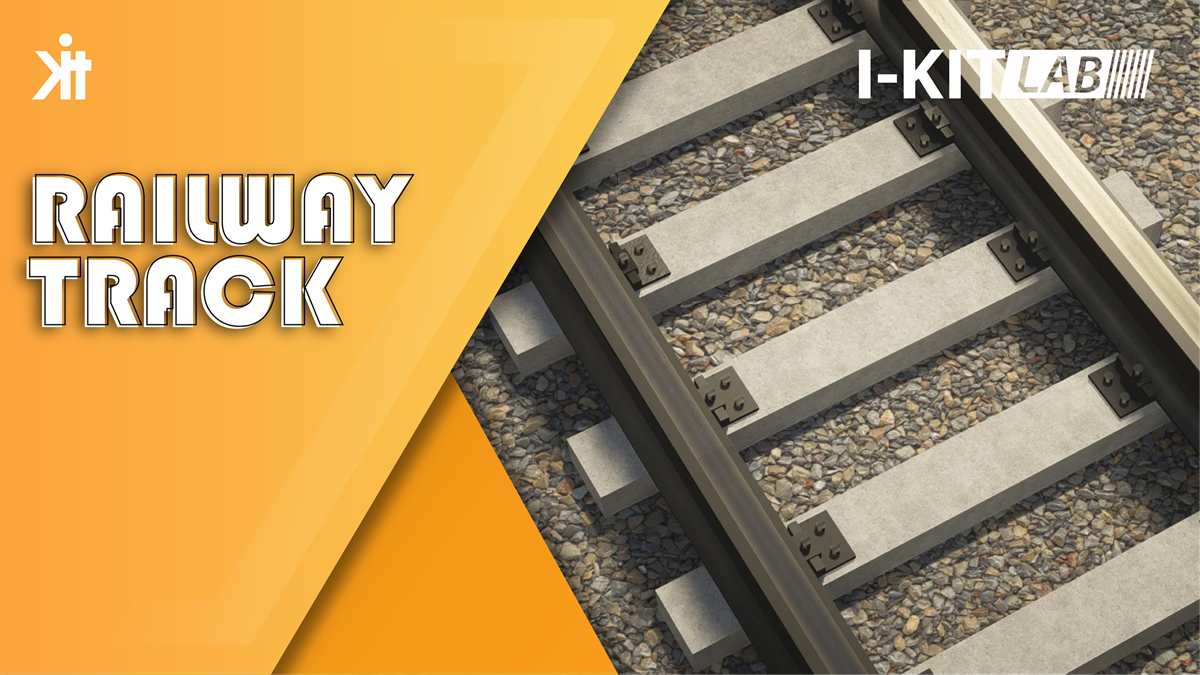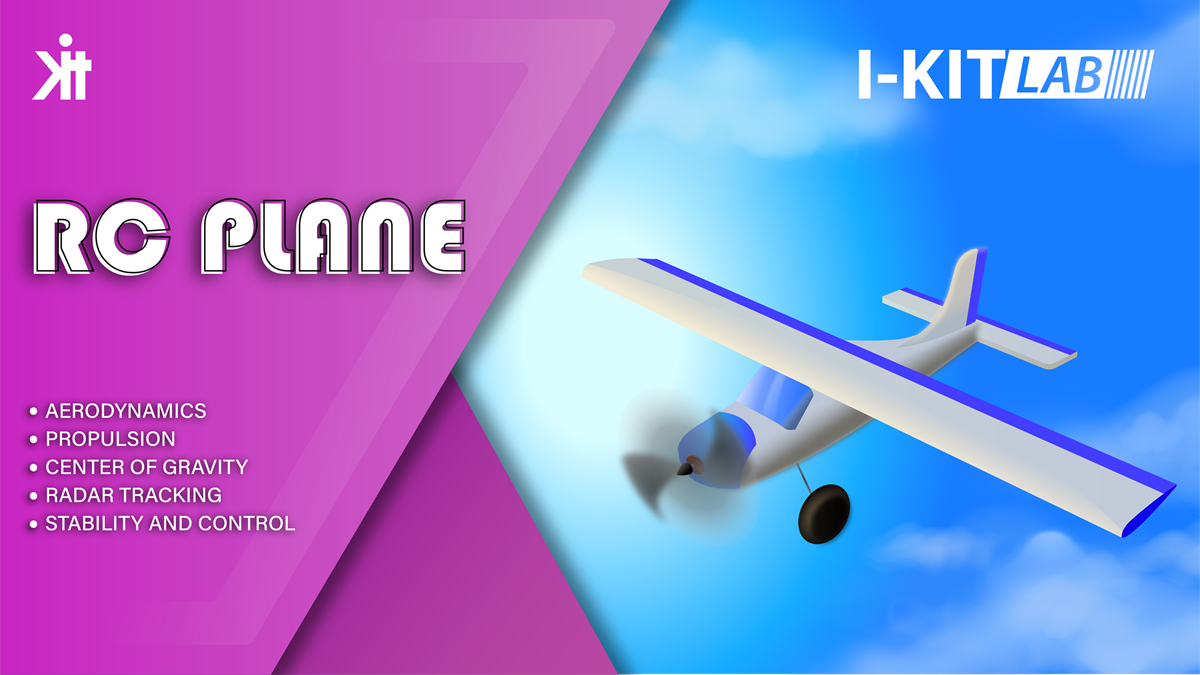Railway Track

Discover the Mechanics Behind Train Wheels
Train travel has long been recognized as a vital mode of transportation, with wheels
playing a crucial role in ensuring the smooth and efficient movement of these massive
machines.
In our last class we learned about “Axel and Wheels” and today we are going to discover
about how that fascinating wheel of train works?

- Have you ever thought that why wheels of train and cars, motorbike, cycle and
etc are different? - What is the difference between Wheel and Tyres?
- Why train take so much time to stop down after applying brake?
- Why the wheels of Passenger trains and Load trains are different?
- Why wheels of train slip out of track?
- What all are the essential components that used in making of railway tracks?
Key Concepts
Physics
- Centrifugal Force.
- Center of Mass.
- Law of Action and Reaction.
Mathematics
- Geometry.
- Conic Section.
Geometrical Structure of Wheel
You might have wondered how the train is able to stay on its tracks. The secret lies in the
train’s wheels. Although they seem cylindrical at first glance, when looking more closely
you will notice that they have a slightly semi-conical shape and this special geometry is
what keeps trains on the tracks.
So, here question arises in our mind that what is so special in this conical structure?
Answer – when we talk about conical shape it has a property of moving in a straight line
due to its structure which keeps mass of the whole body at center therefore it always move
in one direction.
Activity on Conical Shape
In our lab we performed an activity by using double cone on a parallel
track.
Here, we created a parallel track on which our double cone was
moving in a straight line after applying a push by hands and
travelled straighty on a track so, here we can conclude that any
conical shape will move in a straight path and due to this
phenomenon wheels of train are made slightly conical therefore
they are on of the reason to eliminate the risk of train to slip out
from the track.

Physics Behind the Conical Arrangement of Wheels
The conical arrangement of wheels produces the self centering force due to that
gravitational force acts perpendicular on the track and keeps the wheel balanced.
Again, another question arises here that is it the only reason for using conical shapes?
No, wheels are aligned facing towards each other because when the action forces kicks on
both the wheel it causes reaction force that is applied towards the centre of wheel and
therefore it cancel out each other.

How do Train Wheels Turn?
Now we have talked lot about balancing and travelling on a straight path but we
know that trains take turn so how is that possible?
This is also possible due to the conical shape of wheels because when train take turn
towards any direction one wheel needs to travel more distance like for example if train
takes the right turn then left wheel will travel more distance compared to the right one.
How is it possible to move one wheel some extra distance when they are fixed
together with a common shaft?
Let us assume that train is taking left turn for that the right wheel will slide slightly
towards the left wheel and due to its bigger radius.
Some Extra Safety Features
What if due to sliding of wheel it comes out of track by chance?
Yes, it is a valid situation where wheel can go out of track, to eliminate this risk flanges
are attached as they lock one side of wheel and they exert reaction force to other wheel to
move back on its position again.

This is not just the only safety prevention as because railway tracks deal with more other
problems, and which is related to railway track so let’s move ahead and understand
engineering of railway track.
Types of Wheel Arrangement used in different Types of Trains
In different types of trains and engines we have noticed over a period of time with their
special abilities to resolve the problems.
Have you ever wondered guys why the passenger trains runs super fast whereas load
trains move slightly slow compared to passenger trains?
The reason lies in the arrangements of wheels let’s dig in more to find out:-
There are mainly two types of arrangements we see nowadays which are Bo-Bo and
Co–Co.
Let’s move ahead and understand the working of these wheel arrangements.
Bo-Bo System
In the context of trains “Bo-Bo” refers to a wheel arrangement system. It is a notation
used to describe the arrangement of axles and wheels on a train.
The “Bo” represents the arrangement of the axles in a separate blocks or a bogie where B
indicates that each bogie has 2 axles and the “o” signifies that the axles are individually
powered by electric or diesel traction motors.
A Bo-Bo arrangements are commonly fixed in electric and diesel-electric trains.
Why only Bo-Bo arrangements are fixed only in a passenger trains?
The reason is by arranging wheels in Bo-Bo system it increases speed and performance of
the train and this happens because in Bo-Bo system wheel of train covers less surface area
due to which they can move faster.
Co-Co System
The Co-Co wheel arrangements is another commonly used arrangement for trains. Similar
to the Bo-Bo arrangements, Co-Co also refers to the arrangement of axles and wheels in a
train.
In Co- Co wheel arrangements each bogie of a train has a three axles and more
importantly in this arrangement to bogies are coupled together which results into 6 axles
all together.
These arrangements are mainly used in heavy load trains as these trains exert more force
on the track so by increasing surface area of the wheels by adding an extra wheel due
to that force is distributed among the wheels and therefore it exerts less force and
prevents trains from slipping out of the track. But in this arrangement speed of train
decreases compared to passenger trains.
Arrangement of Bo-Bo configuration
Arrangement of Co-Co configuration

Construction of a Railway Track
Till now we have talked alot about the wheels and to understand the mechanism of wheel
more deeper we also need to understand the engineering of a track.
So, question arises what are the problems we are going to encounter when train will
run from the track?
- Train speed – It deals with various components like, Braking distance, Acceleration,
Friction and Force exerted on the track and components of the train. - Track Geometry – To enhance the stability and performance we need to deal with Alignment
of a track, Curvature and Gradient. - Train load – The weight and distribution of the load being carried by the train is
evenly distributed on the Ballasts. - Weather – Weather conditions, such as rain, water logging or extreme temperatures,
can affect the track’s condition and the train’s performance.
Components of Railway Track
To construct the railway track there are some vital components which make sure stability of track.
- Rail Sections
- Sleepers
- Ballast
- Rail Fastening





Rail Sections
The rail lines are the top most component track structure which are made up of steel
which provides strength and resistance to the railway track.
Rail lines are made by joining multiple sections which are known as Railway
sections.

Key points to notice
When railway sections are joined there is some space left between them have you ever
thought why is that space left?
The reason is to give more flexibility to rail lines and in the time of summer due to extra
heat these rail section expand due to its metallic property incase if we don’t leave the space
in between the rail sections then rail lines can come out of track due to the extra load and
less flexibility.
Sleepers
Sleepers are the main component which are used to distribute the load of train to ballast
evenly, sleepers are made of various materials such as wood, concrete and steel,
these are kept below the rail lines to give stability to the track.

Ballast
Ballast consists of crushed stones or gravels which provides stability to the rail lines, it
also acts as a drainage system and maintains track geometry.

- Load distribution – Primary function of ballast is load distribution and there capacity to absorb
load and pressure - Stability and Drainage – It prevents track from shifting when extra force is distributed by
interlocking each other, and on the time of rain Additionally, the layer of ballast facilitates
drainage, allowing water to flow away from the track, preventing waterlogging, and maintaining the
track’s stability.
Have you guys ever noticed that the shape of these ballasts are having so many edges and they are
neither
square, rectangle, circle etc not of any common shape we can name of ?
This is because these shapes are build in such a way that due to their edges they can interlock each other
at the time of vibrations to provide strength to sleepers.
Rail Fastening
Rail fasteners are fixed on the top of sleepers to hold the rail lines in place and to keep
them fixed on the track.

Why car wheels are made of rubber instead of steel?
We all have noticed that there is a major difference between wheel of train and a car wheel which is also
known as a tyre.
In ancient times wooden wheels were used and due to that they create so much noise pollution and they were
not at all comfortable, so if we just imagine that what if every vehicle in the world was running on a
wooden or metal wheel today then the level of noise pollution generated can easily destroy the nature.
Therefore the invention of rubber tyres are blessing for nature as they reduce noise pollution plus they
provide much more comfortability and due to its outer rubber material they require less maintenance and most
importantly u can ride faster in them as they generate great friction so braking the vehicle is so easy and
fast.
Wheel and Tyres
When we talk about wheels and tyres how many of us actually know the difference between them?

A wheel is the rigid circular component that connects to the vehicle’s axle and supports the tire they
are
usually made of hard substance like metal such as steel aluminum and alloy whereas a Tyre is a rubber,
air-filled component that surrounds the wheel. It is specifically designed to provide cushioning, and
protection to the wheel and the vehicle, while also offering a comfortable and safe ride.
Let’s look into some key functional difference between tyre and wheel
Functional Difference of the Wheel and Tyres
Wheel
- Load Bearing: The wheel bears the weight of the vehicle and distributes it evenly across the
tyres contact patch. - Attachment to Axle: The wheel connects to the vehicle’s axle, enabling it to rotate with the
movement of the vehicle. - Shape and Structure: The wheel provides the shape and structural integrity necessary for
tire mounting and stability.
Tyres
- Traction and Grip: The tyres tread pattern and rubber compound provide grip and traction on
different surfaces, allowing the vehicle to accelerate and brake effectively. - Cushioning and Absorption: The tyre absorbs shocks and vibrations from the road, providing a
smoother and more comfortable ride. - Protection: The tyre acts as a protective barrier between the wheel and the road, guarding
against impacts, punctures, and damage.




Responses